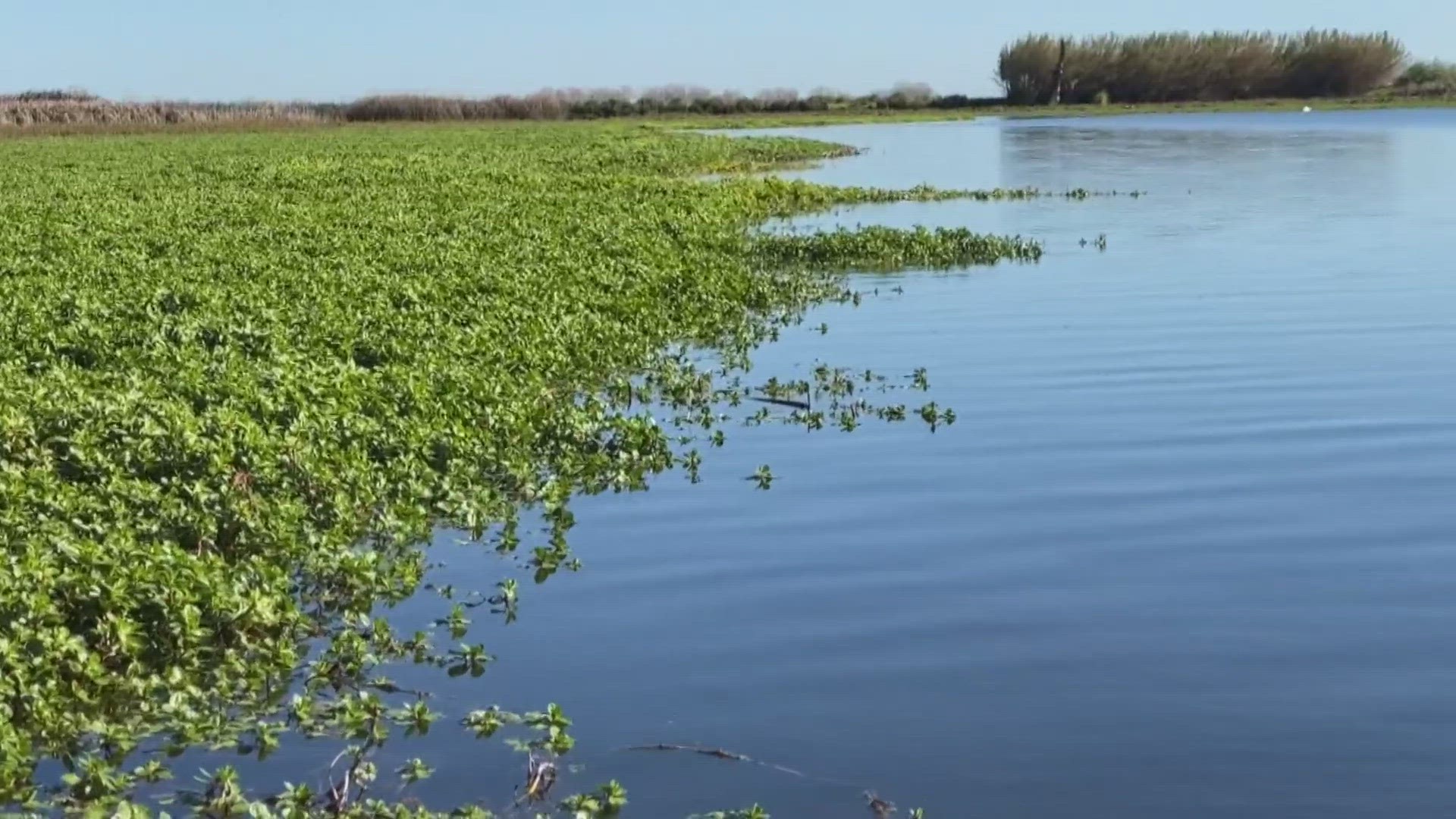STOCKTON, Calif. — Invasive plants have taken root in the West Coast's largest estuary, the Sacramento-San Joaquin River Delta. It's a problem the Division of Boating and Waterways works to control annually.
"They tend to grow out and they tend to push out taking over a lot of the waterways," said Jeffrey Caudill, a program supervisor for the Aquatic Invasive Plant Control Program.
Starting in March, crews work to keep the problem at bay by spraying herbicides and mechanically harvesting some sites.
"If you can keep pushing them back and keep them controlled early, they become less of a problem later. In the summers, these plants can double in size, which makes them terribly difficult to control at that stage," Caudill said.
Invasive plants can cause a slew of problems, especially for the boating industry.
"If we aren't able to treat everything and control it as best we can, it can slow down the barges and at night sometimes the barges won't be able to operate because there's so many plants," Caudill said.
He adds it can impact the supply chain as goods make their way to the Port of Stockton.
Crews spray herbicide on invasive aquatic plants, like the water primrose. Staff will likely have to come back as it takes multiple applications to keep the situation under control.
You might wonder, how did the invasive plants get there in the first place?
"A lot of the plants came here from ornamental trade, along with being aquarium plants," Caudill said. "And when folks dump it into the waterways, it rapidly grows and spreads."
Caudill says the growth can crowd out native fish and plants because they can spread so rapidly. The California Department of Parks and Recreation says it's likely they will never be fully removed from the Delta.
State Parks said treated areas are monitored to make sure herbicide levels don't exceed allowable limits. Crews will continue to treat the area through the end of November.
WATCH MORE ON ABC10: Dozens of vehicles sit below the surface of the San Joaquin River



















